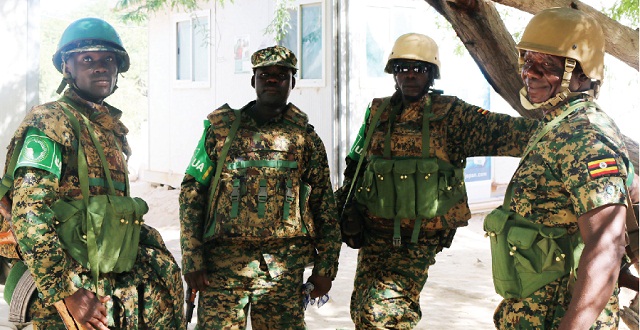
Some of the major clans in Somalia include the Hawiye, Dir, Isaaq and the Darood. But even among these clan groupings, they are further divided into sub-clans. Intervening forces in Somalia have to deal with these intra-clan rivalries, among other complexities. For instance, the Hawiye are sub-divided into the Habar Gedir and Abgal.
“Sometimes when you hear an attack in Mogadishu or anywhere in Somalia, it is an attack to send a message to the government for a grievance they are holding; it could be an appointment that was not honoured or even a dispute the clan wants resolved,” Muhanga says.
The difference between Al Shabaab and the clans is that it has an international image, but is it not exactly an enemy of the people, according to various sources in Somalia. UPDF soldiers in Somalia say sometimes it is hard to tell who is a member of Al Shabaab and who is not.
Al Shabaab has its own tax administration system and levies a tax on some roads. It is those who refuse to pay the tax that run into trouble with Al Shabaab, Muhanga says.
But knowing about the clan system is not the same as knowing how to manage it. There are forces; including the United Nations and African Union, that rather than flow with the system, are determined to change it. In fact the UN does not want UPDF to engage in some activities; such as treating of the sick, saying that is strictly the work of humanitarian organisations. But soldiers in Somalia say, with such moves, the UN is complicating the work of rebuilding the country.
“The AU and the UN have set targets for the government of Somalia to start holding elections through universal suffrage for all offices by 2020,” she added, “Voting based on clans cannot go on forever,” says Lydia Wanyoto, the Deputy Special Representative of the Chairperson of the African Union Commission. She told The Independent during a meeting at Aden Abdulle Airport that both the AU and UN want Somalia to move away from a clan-based system of electing leaders. But other voices say Somalis are comfortable with the clan model of democracy and that the Western style democracy of voting may instead cause more instability in the country.
Muhanga agrees that the clan rivalry can be a source of instability and that is why UPDF is involved in mediation of clan conflicts.
He gives the example of how clan rivalry plays out using one of the hotly contested territories in Somalia; the Lower Shabelle region, a large swathe of fertile land with flourishing farms and plantations.
Muhanga says it is the most fertile land in the country and exports fruits to the Middle East. Due to its fertile soils, various Somali clans take part in farming in this area and gun fights occasionally break out because of the economic gain lying therein.
“Because you are thin on the ground, you do not know whom to ally with,” Muhanga explains. AMISOM forces are routinely changed including Uganda which sends battle groups in intervals of about two years. The AMISOM force comprises 22,000 troops where Uganda has 6,000.
In AMISOM’s strategic command structure, Somalia is divided into five sectors among the Troop Contributing Countries (TCCs) and Uganda occupies Sector 1- the most volatile area which contains Mogadishu and surrounding areas including the highly productive Lower Shabelle region. Sector 2 is occupied by Kenya, Ethiopia is in Sector 3, Djibouti is in 4 and Burundi in 5.
UPDF has scored some strategic advantages being the only country that can occupy sector 1. Ethiopia cannot because of its bitter history with Somalia basing on past invasions, Kenya is considered inexperienced militarily and Djibouti being neighbours to Somalia complicates the puzzle because of the shared ethnicity since they are all in the Ogaden region.
 The Independent Uganda: You get the Truth we Pay the Price
The Independent Uganda: You get the Truth we Pay the Price


